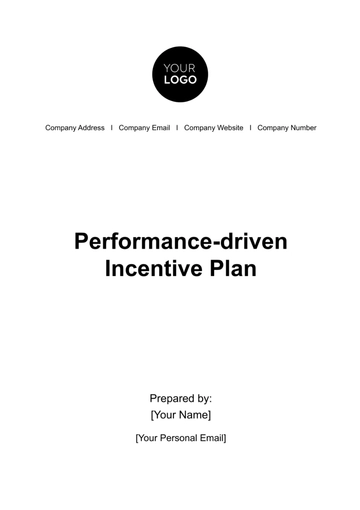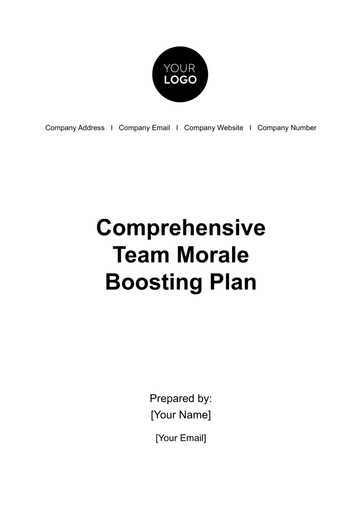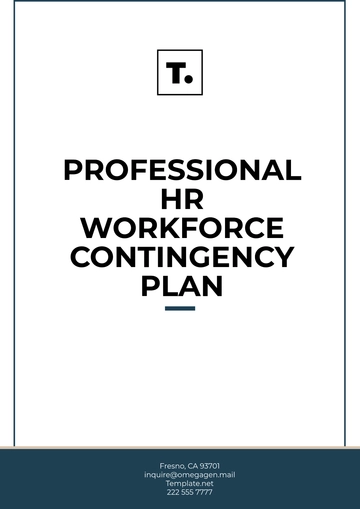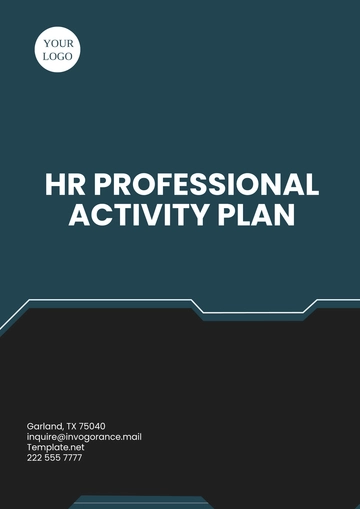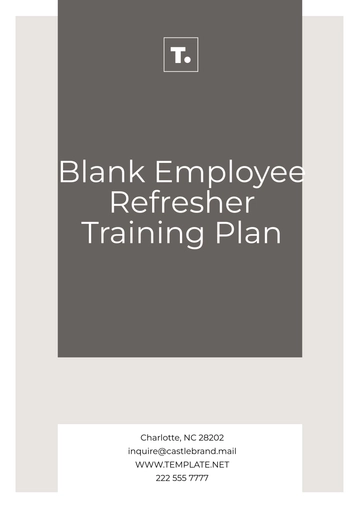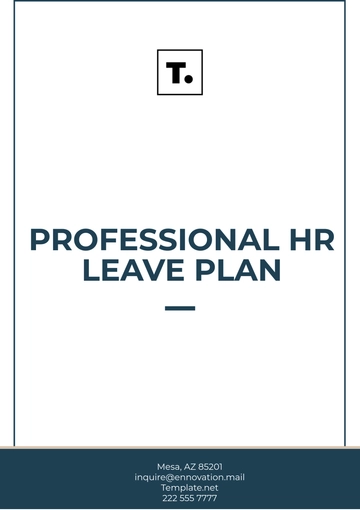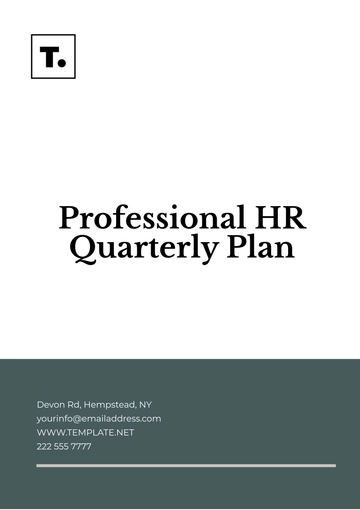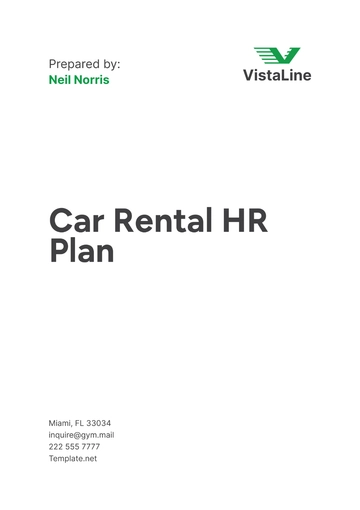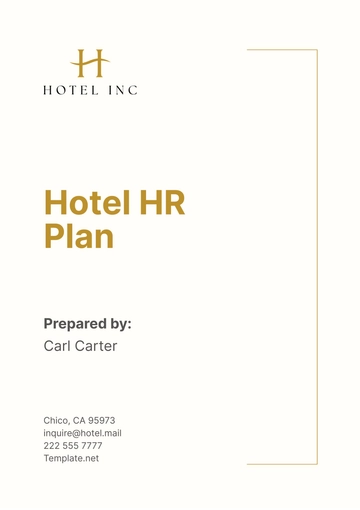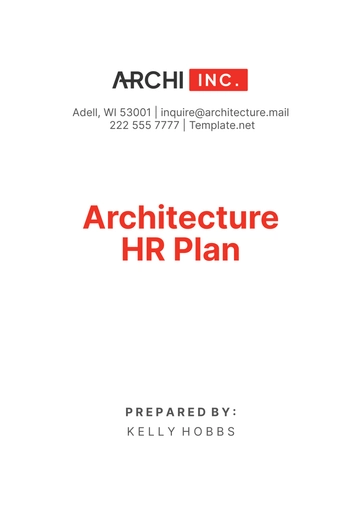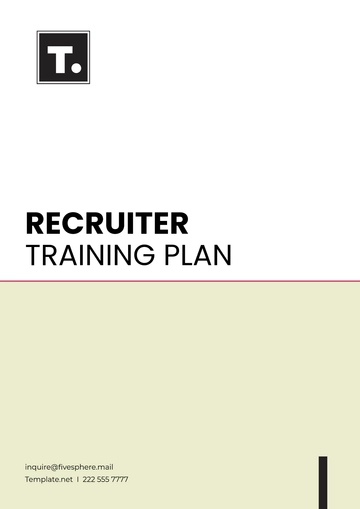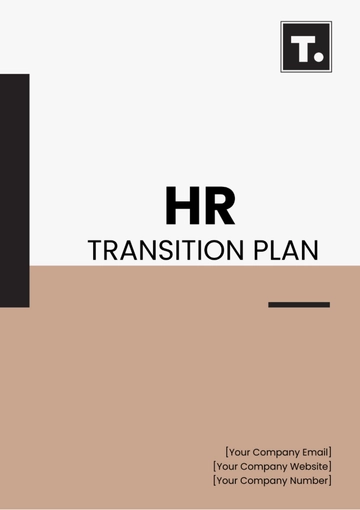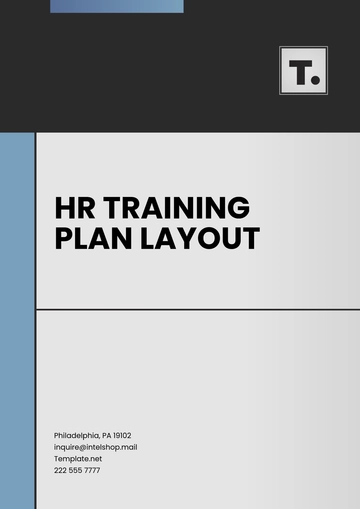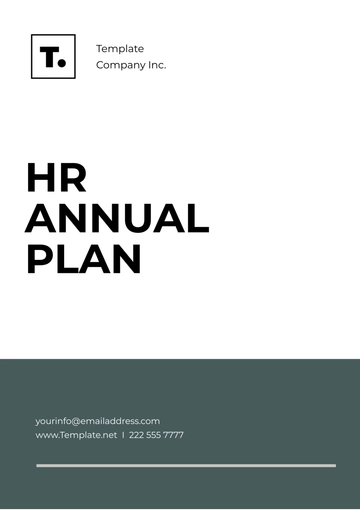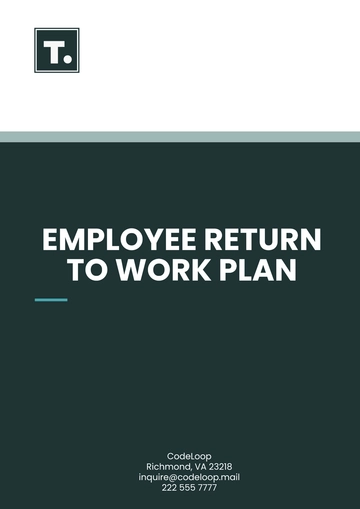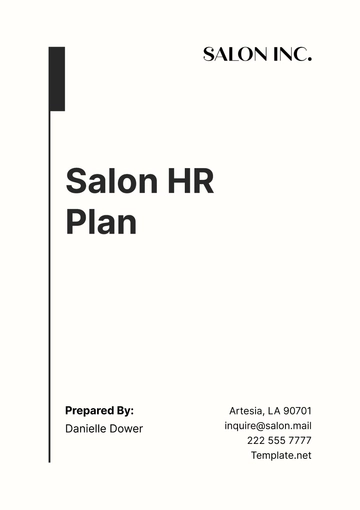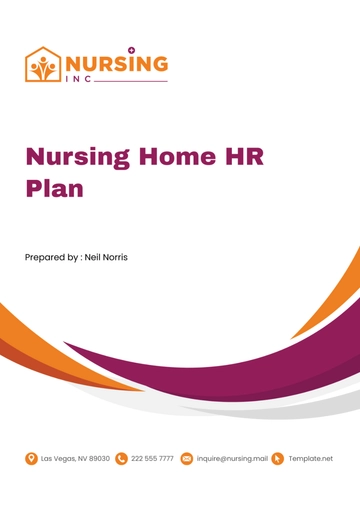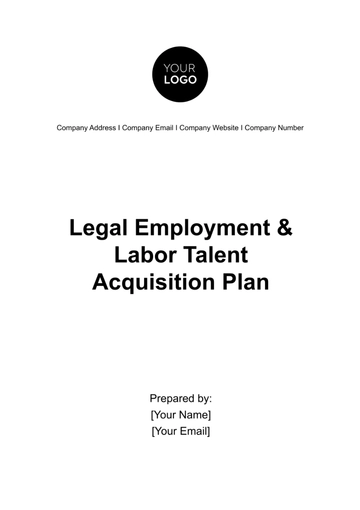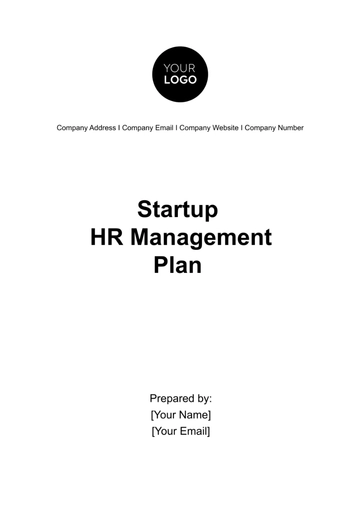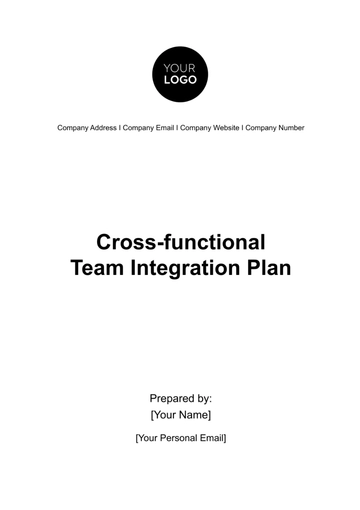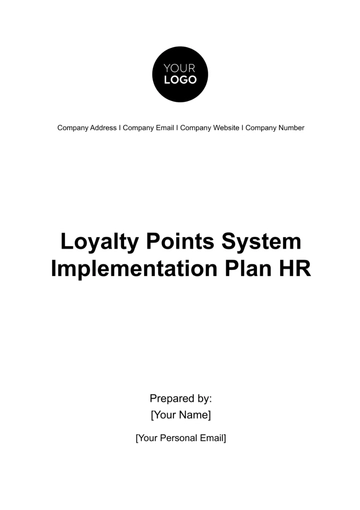Free Comprehensive Health Insurance Plan Analysis HR
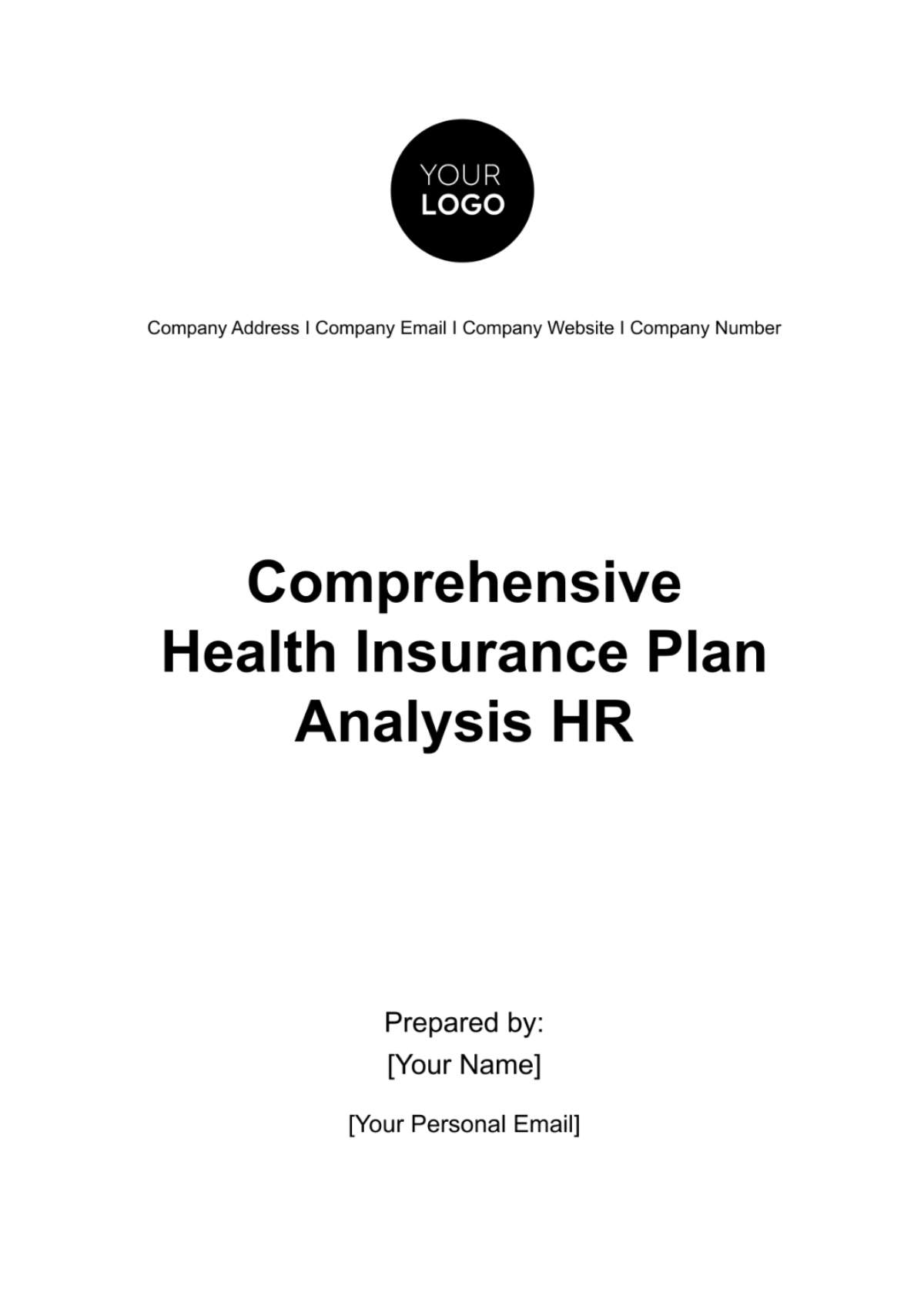
I. Introduction
The primary objective of this document is to offer a thorough and all-encompassing analysis of multiple health insurance plans that are viable for the employees at [Your Company Name]. In today's complex healthcare landscape, selecting the appropriate health insurance plan is not just a financial decision but also a factor that can significantly impact the well-being and job satisfaction of our staff. Thus, this report has been meticulously curated to serve as a crucial resource for decision-makers, HR professionals, and department heads within the organization.
The analysis looks at three fundamental aspects—costs, coverage, and employee preferences—to provide a holistic view of available health insurance options. On the cost front, the document dissects different components like monthly premiums, deductibles, co-pays, and out-of-pocket maximums to understand the financial commitment required from both the employer and the employee. As for coverage, we delve into the specific medical services, treatments, and healthcare providers that are accessible under each plan, highlighting any limitations or exclusions.
Moreover, the voice of our employees is a vital component of this analysis. Through anonymous surveys and feedback sessions, we have gauged employee priorities and preferences regarding health insurance. This ensures that the chosen plan aligns closely with staff needs, thereby boosting satisfaction and retention.
By synthesizing all these elements, this report provides a balanced perspective, aiding [Your Company Name] in making an informed, considerate, and strategic choice in selecting a health insurance plan.
II. Methodology
The methodology employed in this analysis aims for a comprehensive and unbiased evaluation of potential health insurance plans best suited for [Your Company Name] employees. Our approach is multi-faceted, integrating both qualitative and quantitative data to provide a well-rounded perspective on available options, which range from basic to premium coverage levels.
The first stage of the methodology involved an exhaustive review of various health insurance providers in the market. This entailed examining each provider's reputation, financial stability, range of coverage, and other pertinent factors. We then conducted one-on-one interviews with representatives from these providers to delve deeper into the specifics of their plans, including coverage limitations, network restrictions, and other nuanced details that are often overlooked.
Simultaneously, we carried out an anonymous survey among [Your Company Name] employees to capture their preferences, needs, and concerns regarding health insurance. The survey touched on several key points including favored types of coverage, maximum acceptable out-of-pocket expenses, and the importance of added benefits like wellness programs or telehealth services.
Moreover, the plans were evaluated on three principal criteria: coverage, affordability, and added benefits. Under each of these categories, various metrics were assessed, such as the comprehensiveness of coverage, the monthly and annual costs involved, and the value-added services that could enhance employees' health and well-being.
By combining the insights garnered from provider interviews with the employee survey results, this methodology ensures that the analysis is both rigorous and aligned with the actual needs and preferences of [Your Company Name]'s workforce. This dual-pronged approach aims to guide decision-makers in selecting a health insurance plan that not only is financially viable but also resonates with the employees' expectations and needs.
III. Types of Plans Analyzed
In this section, we delve into the different types of health insurance plans that were considered in our analysis. The aim is to provide an overview of the main features, advantages, and disadvantages of each plan type. The three major plan structures we explored are Health Maintenance Organization (HMO) Plans, Preferred Provider Organization (PPO) Plans, and High-Deductible Health Plans (HDHP).
HMO Plans
Focuses on a Network of Doctors: HMO plans require members to select healthcare providers within a predefined network. While this limitation can sometimes restrict choices, it also tends to result in lower premiums and out-of-pocket costs.
Requires Primary Care Physician (PCP): A distinctive characteristic of HMO plans is the requirement for each member to choose a Primary Care Physician (PCP). The PCP serves as the gatekeeper for all your healthcare needs, meaning you'll need referrals from the PCP to see specialists or to undergo certain tests.
PPO Plans
More Flexibility in Choosing Healthcare Providers: PPO plans offer greater flexibility when it comes to choosing healthcare providers. You are not restricted to a network and can choose to see any doctor or specialist, although staying within the network usually results in lower costs.
No Need for a Primary Care Physician (PCP): Unlike HMOs, PPO plans do not require you to have a Primary Care Physician. This means you can directly consult specialists without needing a referral, offering greater freedom in managing your health.
High-Deductible Health Plans (HDHP)
Lower Premiums: HDHP plans typically offer lower monthly premiums compared to HMO and PPO plans. This makes them an attractive option for those who are generally healthy and do not require frequent medical services.
Higher Out-of-Pocket Costs: While the premiums are lower, HDHPs come with higher out-of-pocket expenses before the insurance kicks in. This means you'll pay more for medical services upfront, making this plan better suited for those who can afford to pay higher costs on an ad-hoc basis.
By understanding the key features of each of these plan types, decision-makers can more effectively gauge which plan is most aligned with the needs and financial capabilities of [Your Company Name]'s employees.
VI. Plan Features and Costs
This section provides a detailed comparison of the critical financial aspects across the three types of health insurance plans analyzed—HMO, PPO, and HDHP. Understanding the costs and features associated with each plan can help both the employer and employees make an informed decision about which health insurance plan is the most cost-effective and suits their individual needs. The table below breaks down the features and associated costs of each plan type for easy comparison.
Feature/Cost | HMO Plans | PPO Plans | HDHP Plans |
Monthly Premium | $[0] | $[0] | $[0] |
Deductible | |||
Co-pay | |||
Out-of-Network | |||
Network Size | |||
Prescription Drugs | |||
Wellness Programs | |||
Telehealth | |||
Family Coverage |
Monthly Premium
HMO Plans: At $[0] per month, HMO plans offer a moderate monthly premium, making it a financially accessible option for many employees.
PPO Plans: With a monthly premium of $[0], PPO plans are generally more expensive due to the increased flexibility they offer in choosing healthcare providers.
HDHP Plans: The HDHP has the lowest monthly premium at $[0], making it appealing for those who don't expect to have frequent healthcare visits.
Deductible
HMO Plans: The HMO plan has a deductible of $[0], which means you'll pay this amount for covered services before the insurance begins to pay.
PPO Plans: PPO plans come with a slightly higher deductible of $[0], owing to the more extensive range of healthcare options they offer.
HDHP Plans: With a deductible of $[0], the HDHP requires higher upfront costs before insurance coverage kicks in.
Co-pay
HMO Plans: A co-pay of $[0] is required for most in-network visits.
PPO Plans: The co-pay is slightly higher at $[0] for in-network visits, reflecting the broader selection of healthcare providers.
HDHP Plans: There is no co-pay, but the higher deductible and out-of-pocket costs should be noted.
Out-of-Network
HMO Plans: HMOs generally provide no coverage for out-of-network services except in emergency situations.
PPO Plans: PPOs offer partial coverage for out-of-network providers, although costs can be significantly higher than using in-network services.
HDHP Plans: Like HMOs, HDHPs typically do not cover out-of-network services unless it's an emergency.
By closely examining the features and costs associated with each plan, [Your Company Name] can make a well-informed choice that best meets the healthcare needs and financial constraints of its employees.
V. Employee Preferences
To gain deeper insights into the health insurance needs and preferences of our workforce, we conducted an anonymous survey among employees of [Your Company Name]. Understanding these preferences is crucial for tailoring an insurance plan that will not only provide adequate coverage but also earn high employee satisfaction. The survey revealed three key areas that employees prioritize: lower monthly premiums, extensive coverage, and flexibility in choosing healthcare providers.
60% Prefer Lower Monthly Premiums
A significant majority of employees (60%) indicated that they prioritize lower monthly premiums when it comes to choosing a health insurance plan. This is an important factor to consider, especially if the organization aims to make the plan financially accessible for the broadest swath of its workforce. The high percentage of employees preferring lower premiums suggests that an HDHP plan may be an attractive option for many, despite the higher out-of-pocket costs that come with it.
25% Value Extensive Coverage
Roughly a quarter of the respondents (25%) value extensive coverage, expressing the need for a broad range of medical services and treatments to be included in their insurance plan. This group is likely more concerned with the comprehensiveness of the healthcare services offered rather than just the cost. For this demographic, a PPO or a comprehensive HMO plan might be more suitable given their broader network of services and specialists.
15% Want Flexibility in Choosing Healthcare Providers
The remaining 15% of surveyed employees prioritize the freedom to choose their healthcare providers, reflecting a desire for flexibility and personal choice in their healthcare decisions. This group might find the structure of a PPO plan, which generally does not require a Primary Care Physician and offers partial out-of-network coverage, to be more aligned with their needs.
Understanding these employee preferences will significantly inform the decision-making process as [Your Company Name] evaluates which type of health insurance plan will be the most beneficial and satisfying for its employees. It may also warrant considering a mixed or tiered approach to health insurance, offering more than one option to cater to the diverse needs and priorities of the workforce.
VI. Recommendations
After conducting a thorough analysis that encompassed the costs, features, and employee preferences, our recommendation is to opt for a PPO (Preferred Provider Organization) plan for [Your Company Name]. Below are the detailed reasons that underpin this recommendation:
Financial Feasibility
While it's true that PPO plans generally come with slightly higher premiums compared to HMO and HDHP plans, they offer a balance between cost and coverage that many employees find appealing. With a monthly premium of $350 and a deductible of $700, a PPO plan sits in a moderate range of affordability that could accommodate the financial constraints of a significant portion of the workforce.
Extensive Coverage
25% of the employees surveyed indicated that extensive coverage is a priority for them. PPO plans often offer comprehensive benefits, including a wide array of specialists and medical services. This aligns well with the needs of employees who value the breadth of healthcare options, from preventive services to specialized treatments.
Flexibility in Choosing Healthcare Providers
Our survey showed that 15% of the employees prioritize the freedom to choose their healthcare providers. PPO plans excel in this regard, allowing members to see any doctor or specialist without requiring a referral from a Primary Care Physician. This means that those who value this kind of flexibility would find a PPO plan to be a good fit.
Balancing Employee Preferences
While 60% of employees expressed a preference for lower premiums, the overall well-being and healthcare satisfaction of the workforce must also be taken into account. Offering a PPO plan does not preclude the possibility of also providing a lower-cost option like an HDHP, to cater to the different preferences and financial capabilities within the company.
VII. Conclusion
Selecting the right health insurance plan for a company is a multifaceted decision that has far-reaching implications for both the organization and its employees. Based on our comprehensive analysis that weighed important aspects such as costs, coverage features, and employee preferences, a PPO (Preferred Provider Organization) plan seems to be the most balanced and advantageous choice for [Your Company Name] at this time.
Balance of Costs, Coverage, and Employee Preferences
A PPO plan skillfully strikes a balance between these critical factors. While it may come with a higher monthly premium, it provides extensive coverage and the kind of provider flexibility that a significant portion of our workforce values. It effectively marries the needs of those who prioritize comprehensive healthcare services with the desires of those who wish for more freedom in choosing healthcare providers.
Flexibility for Future Adjustments
It's important to note that choosing a PPO plan now doesn't limit [Your Company Name] from considering other types of plans in the future. As the company grows and employee needs change, additional insurance options could be considered to ensure that the health coverage remains aligned with the evolving needs of the workforce.
Ongoing Dialogue
This decision should not be a one-time event but part of an ongoing dialogue between employees and the administration. We recommend periodic reviews of the chosen insurance plan to ensure it continues to meet the healthcare requirements and financial constraints of the employees.
Contact Information
Should you have any further questions, need more details, or wish to discuss this further, please don't hesitate to reach out to the Human Resources Department at [Your Company Name]. Your health and well-being are a priority for us, and we are always open to hearing your feedback and concerns.
Thank you for taking the time to review this Comprehensive Health Insurance Plan Analysis. We are committed to making informed and thoughtful choices that promote the well-being of all employees at Your Company Name].
This document is intended for internal use within Your Company Name]. For more information, please reach out to the Human Resources Department.
Prepared by: [Your Name]
Job Position: [Your Job Position]
Personal Email: [Your Email]
User Phone: [Your Number]
Date: [Month Day, Year]
- 100% Customizable, free editor
- Access 1 Million+ Templates, photo’s & graphics
- Download or share as a template
- Click and replace photos, graphics, text, backgrounds
- Resize, crop, AI write & more
- Access advanced editor
Discover unparalleled ease with Template.net's Comprehensive Health Insurance Plan Analysis HR Template. This editable and customizable document, powered by an advanced AI Editor Tool, streamlines your insurance assessment. Unravel the intricacies effortlessly, ensuring your team makes well-informed decisions. Elevate your health coverage analysis with this user-friendly template, available exclusively on Template.net.
You may also like
- Finance Plan
- Construction Plan
- Sales Plan
- Development Plan
- Career Plan
- Budget Plan
- HR Plan
- Education Plan
- Transition Plan
- Work Plan
- Training Plan
- Communication Plan
- Operation Plan
- Health And Safety Plan
- Strategy Plan
- Professional Development Plan
- Advertising Plan
- Risk Management Plan
- Restaurant Plan
- School Plan
- Nursing Home Patient Care Plan
- Nursing Care Plan
- Plan Event
- Startup Plan
- Social Media Plan
- Staffing Plan
- Annual Plan
- Content Plan
- Payment Plan
- Implementation Plan
- Hotel Plan
- Workout Plan
- Accounting Plan
- Campaign Plan
- Essay Plan
- 30 60 90 Day Plan
- Research Plan
- Recruitment Plan
- 90 Day Plan
- Quarterly Plan
- Emergency Plan
- 5 Year Plan
- Gym Plan
- Personal Plan
- IT and Software Plan
- Treatment Plan
- Real Estate Plan
- Law Firm Plan
- Healthcare Plan
- Improvement Plan
- Media Plan
- 5 Year Business Plan
- Learning Plan
- Marketing Campaign Plan
- Travel Agency Plan
- Cleaning Services Plan
- Interior Design Plan
- Performance Plan
- PR Plan
- Birth Plan
- Life Plan
- SEO Plan
- Disaster Recovery Plan
- Continuity Plan
- Launch Plan
- Legal Plan
- Behavior Plan
- Performance Improvement Plan
- Salon Plan
- Security Plan
- Security Management Plan
- Employee Development Plan
- Quality Plan
- Service Improvement Plan
- Growth Plan
- Incident Response Plan
- Basketball Plan
- Emergency Action Plan
- Product Launch Plan
- Spa Plan
- Employee Training Plan
- Data Analysis Plan
- Employee Action Plan
- Territory Plan
- Audit Plan
- Classroom Plan
- Activity Plan
- Parenting Plan
- Care Plan
- Project Execution Plan
- Exercise Plan
- Internship Plan
- Software Development Plan
- Continuous Improvement Plan
- Leave Plan
- 90 Day Sales Plan
- Advertising Agency Plan
- Employee Transition Plan
- Smart Action Plan
- Workplace Safety Plan
- Behavior Change Plan
- Contingency Plan
- Continuity of Operations Plan
- Health Plan
- Quality Control Plan
- Self Plan
- Sports Development Plan
- Change Management Plan
- Ecommerce Plan
- Personal Financial Plan
- Process Improvement Plan
- 30-60-90 Day Sales Plan
- Crisis Management Plan
- Engagement Plan
- Execution Plan
- Pandemic Plan
- Quality Assurance Plan
- Service Continuity Plan
- Agile Project Plan
- Fundraising Plan
- Job Transition Plan
- Asset Maintenance Plan
- Maintenance Plan
- Software Test Plan
- Staff Training and Development Plan
- 3 Year Plan
- Brand Activation Plan
- Release Plan
- Resource Plan
- Risk Mitigation Plan
- Teacher Plan
- 30 60 90 Day Plan for New Manager
- Food Safety Plan
- Food Truck Plan
- Hiring Plan
- Quality Management Plan
- Wellness Plan
- Behavior Intervention Plan
- Bonus Plan
- Investment Plan
- Maternity Leave Plan
- Pandemic Response Plan
- Succession Planning
- Coaching Plan
- Configuration Management Plan
- Remote Work Plan
- Self Care Plan
- Teaching Plan
- 100-Day Plan
- HACCP Plan
- Student Plan
- Sustainability Plan
- 30 60 90 Day Plan for Interview
- Access Plan
- Site Specific Safety Plan
